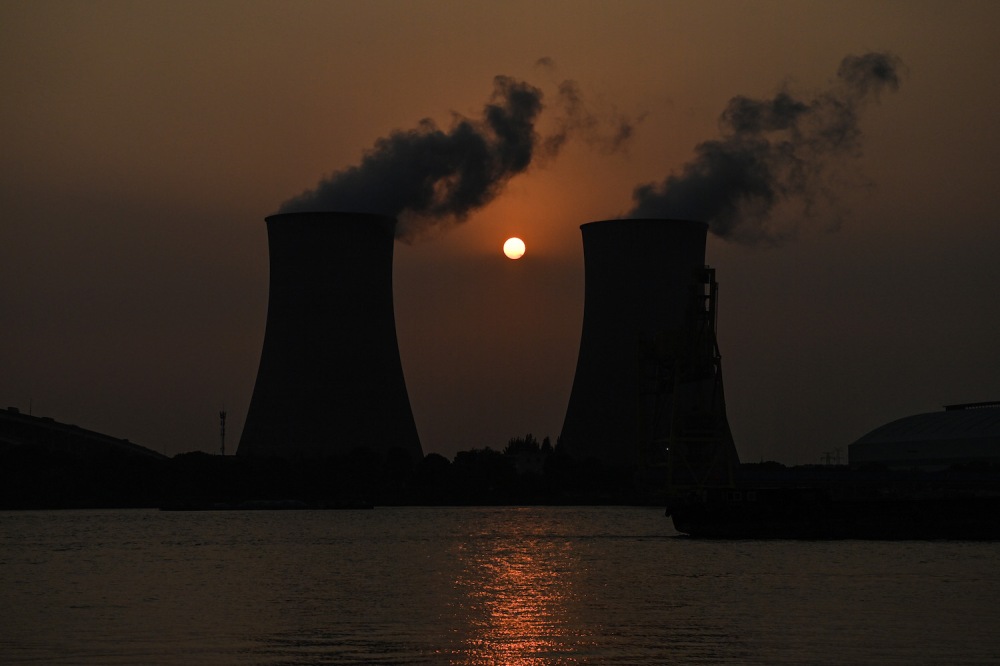Winter is coming and it is only a preview
For a world eager to get out of the pandemic, the gloomy cocktail of economic developments this fall is reminiscent of darker decades. There is a global energy crisis affecting virtually every fuel, with rationing and blackouts in places around the world. Some store shelves are empty. Some gas stations are dry. Supply chains are panting, container ports are overloaded and underemployed. Inflation is rising again after years of stagnation.
The good news is that the ’70s are not back yet. The bad news is that this fall’s energy crisis could be a harbinger of what’s to come: years of rising prices, stuck consumers, and troubled businesses.
Crude oil costs more than $ 85 a barrel, its highest level since 2018. The price of natural gas is sky high, especially in Europe, where it has roughly doubled since the summer and is four times as expensive as it was a year ago. The price of coal is skyrocketing, coal prices in China regularly break records and Australian ore has doubled since the spring.
For a world eager to get out of the pandemic, the gloomy cocktail of economic developments this fall is reminiscent of darker decades. There is a global energy crisis affecting virtually every fuel, with rationing and blackouts in places around the world. Some store shelves are empty. Some gas stations are dry. Supply chains are panting and container ports are overwhelmed and underwork. Inflation is rising again after years of stagnation.
The good news is that the ’70s are not back yet. The bad news is that this fall’s energy crisis could be a harbinger of what’s to come: years of rising prices, stuck consumers, and troubled businesses.
Crude oil costs more than $ 85 a barrel, its highest level since 2018. The price of natural gas is sky high, especially in Europe, where it has roughly doubled since the summer and is four times as expensive as it was a year ago. The price of coal is skyrocketing, and coal prices in China are falling regularly records and Australian ore doubling since spring.
The fundamental driver is a mismatch between demand, which has returned after the world was basically in lockdown for a year, and supply, which has yet to recover. Worldwide, oil investments in new production capacities are still going on well below pre-pandemic levels – and even that was much lower than in the boom years prior to 2014. Another change in recent years has been the reluctance of US shale oil producers to turn the tap on immediately after the rise in oil prices; Instead, shale producers, burned by years of poor yields, have for the most part adhered to a strict financial discipline that has kept US oil in place exit below pre-pandemic levels. Similar dynamics are affecting gas production, with the twist that Europe’s main supplier – Russia – has essentially fallen by the wayside in recent months, limiting additional supplies of gas for export to Europe, which has kept prices at record levels.
All of this has been made worse by extreme weather that has hampered coal production, Scandinavian Hydropower Generation, resulted in lower wind power production and increased demand for natural gas. In the middle are consumers, many of whom are paying record prices for electricity, and companies, some of which are cutting production or laying off workers.
“What we are seeing this winter is a warm-up, a rehearsal for a bigger structural problem we’re going to have,” said Bob McNally, founder and president of the consulting firm Rapidan Energy Group. “This is how energy markets behave when demand meets insufficient supply.” There are many short-term problems that have spiked oil and gas prices, including extreme weather conditions that could ease in the coming months. However, due to years of underinvestment in oil production capacity, the world may struggle to meet the still increasing demand for fossil fuels. “This will repeat itself in a way that is more reminiscent of the 1970s,” he said.
The energy crisis is exacerbating two uncomfortable parts of the global COVID-19 recovery and the limited economic activity that has come with it. Of course, when consumers came out of lockdown with money to spend, inflation ticked higher. But energy prices are rising Travel Inflation even higher – and almost everywhere: The euro zone has inflation of more than 3.4 percent, Great Britain expects inflation of 4 and more percent, prices in the United States have increased by more than 5 percent compared to the previous year and Russian inflation rises to 7 percent. China’s factory gate inflation–a measure of how much companies pay for goods – rising fastest in 25 years.
In addition, the energy crisis is making the current situation in the supply chain even worse. In China, Power outages have resulted in reduced production in factories, with Wave effects to buyers all over the world. In Europe, high energy prices have forced some producers – like Steel mill or fertilizer manufacturers – to reduce production.
The precarious supply situation, which is itself a product of the long lockdown and interruptions in production and sales, continues to weigh on the economic recovery. “The long, repetitive, and unsafe shutdowns resulted in inventory depletion, shipping capacity, workers leaving the logistics industry and reluctance to restart,” said Richard Baldwin, economics professor at the Graduate Institute in Geneva. “Now that consumption is booming again, there is whiplash in the supply chain.”
And this whiplash is taking its toll: The lack of key components like semiconductors led to the eurozone Industrial production End of summer are falling, and consumer confidence is falling in large economies like Germany.
“A lot of companies have been too preoccupied with being too lean, and that’s a real problem,” said Adam Posen, president of the Peterson Institute for International Economics. “Excessive thinness was developed for fine weather, and when there are supply chain disruptions, they are amplified.”
Many forecasters – including economists, large investment banks, and the International Monetary Fund – are rating their growth prospects for large economies like that United States, Great Britain, and China, as well as for the world as a whole.
Even so, gas pipes, rising prices and empty shelves That being said, there is little prospect of a return to the conditions that marked the 1970s as a decade of discontent, even though scary words like “stagflation” have re-emerged.
“People use the term ‘stagflation’, but we are talking about a slowdown in growth in all rich countries,” said Posen. “To say that a global recovery is not as rapid as predicted is not the same as a contraction,” said Posen in the US and UK in the darkest years of the 1970s.
Nevertheless, the combination of energy scarcity, scarcity and higher inflation carries economic risks.
Central banks around the world are curbing asset purchases (which dampen the economy) or raising interest rates or signaling a plan to raise interest rates to achieve this moor what looks like uncontrolled inflation. The US Federal Reserve plans to reduce its monetary easing later this year, with rate hikes expected to begin late next year. The Bank of England was hawkish talk Interest rate hikes to counter rising inflation. Other central banks – including New Zealand, Norway, Pakistan, Brazil, Chile, Russia, and Eastern and Central Europe – have already hiked rates or will do so shortly. the risk These higher interest rates could stall the global economic recovery after COVID-19, just as the energy crisis made that recovery even more fragile.
And the rising energy prices, which will slow down economic growth everywhere, are unlikely to bring any relief in the foreseeable future.
“We’re not going to see much supply growth,” said McNally. “Later in this decade, when we leave COVID, the only thing that can and will happen is that prices go up to balance the market. That reaps what we sow from seven years of underinvestment. “


Comments are closed.